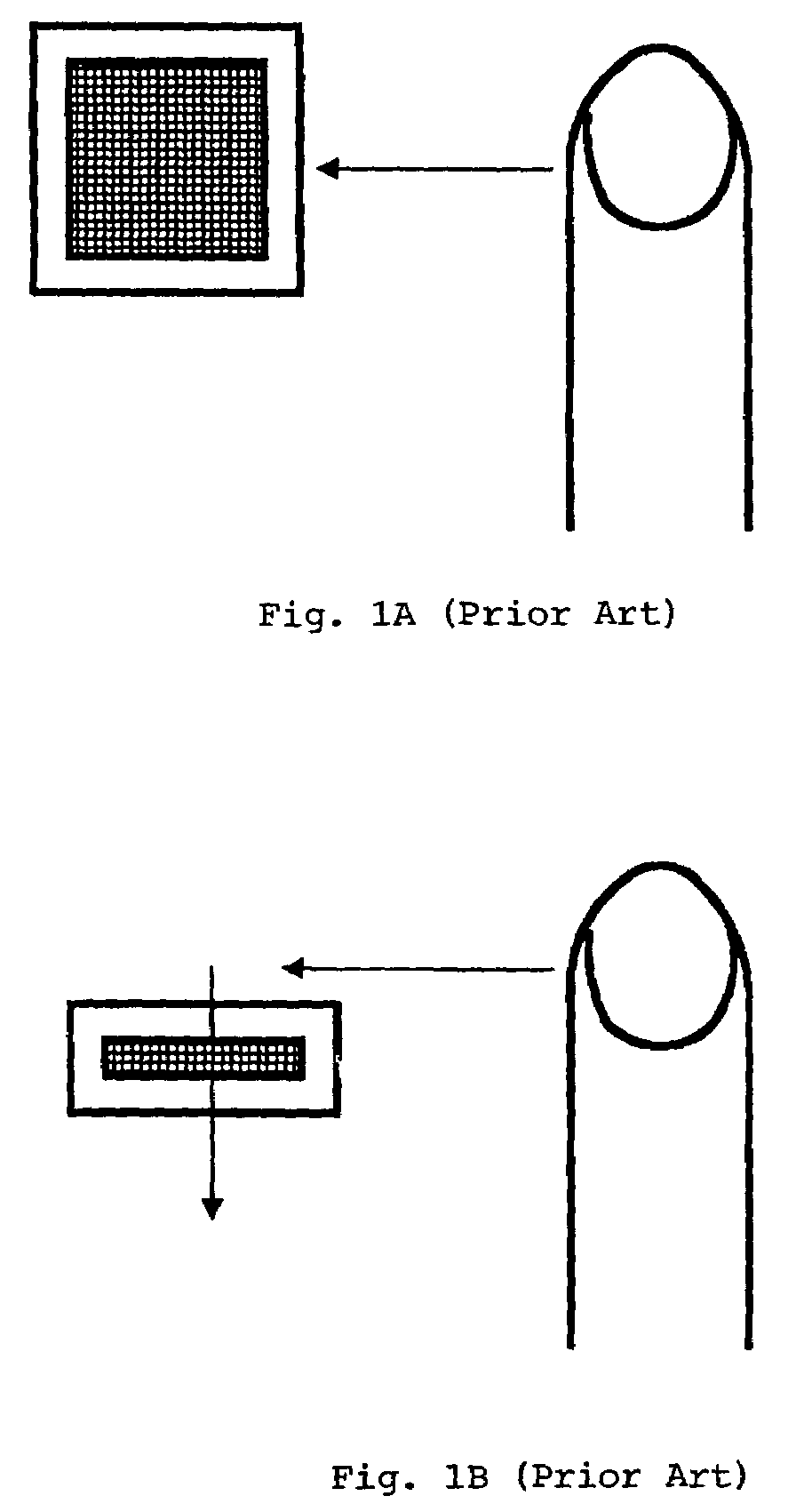Generation of reconstructed image data based on moved distance and tilt of slice data
a slice data and image data technology, applied in image data processing, image analysis, instruments, etc., can solve the problems of difficult to produce accurate fingerprint images for the line sensor, user's finger being likely to sweep the finger differently across the line sensor, etc., and achieve distortion-free accurate image data.
- Summary
- Abstract
- Description
- Claims
- Application Information
AI Technical Summary
Benefits of technology
Problems solved by technology
Method used
Image
Examples
1st embodiment
[0030]As shown in FIG. 3, an image processing apparatus according to a first embodiment of the present invention comprises line sensor (image entering unit) 1, image processor 2 for being supplied with slice data that has been read by line sensor 1 and processing the supplied slice data, and memory 3.
[0031]Line sensor 1 comprises a one-dimensional scanner sensor capable of simultaneously capturing several lines of image data. Line sensor 1 has such characteristics and a shape that match an object whose image data are to be acquired. Line sensor 1 may be an optical, thermosensitive, a pressure-sensitive, or a charge capacitance (CMOS) sensor. Line sensor 1 should have as many pixels as required to meet a requirement for covering a minimum number of overlapping lines between successive slices in order to reconstruct a finger image, and should also have an operating speed large enough to respond to a sweeping action across line sensor 1. Alternatively, a conventional planar sensor may ...
2nd embodiment
[0065]According to the first embodiment, the image processing apparatus has two slice buffers. However, the image processing apparatus may have a single slice buffer having a sufficient capacity required for a single sweep.
[0066]The image processing apparatus with the single slice buffer needs a large buffer area, but is advantageous when line sensor 1 is slow in speed or the processor has an insufficient processing capability. This is because the single slice buffer can read slices successively and subsequently carry out an image reconstruction process altogether, so that more overlaps of the slices can be obtained than with the first embodiment. The more the overlaps of the slices, the better the reconstructed image data.
3rd embodiment
[0067]According to the first embodiment, the image processing apparatus has two moved distance detecting windows. However, the image processing apparatus may have three or more moved distance detecting windows. With the three or more moved distance detecting windows, it is possible to accurately generate an image even if the finger sweeps the sensor while in contact with about one-half of the area of the sensor.
[0068]If there are N moved distance detecting windows, then since the number of windows is increased in order to increase the accuracy with which to detect a moved distance and tilt, the accuracy of individual windows is checked and then a moved distance is detected from an optimum point. Specifically, dx values of individual windows are compared, and their average is determined after eliminating any data that are greatly different from other data. Then, dy and dθ are determined between the remaining windows. For example, if three windows have remained, three dy and dθ, and i...
PUM
 Login to View More
Login to View More Abstract
Description
Claims
Application Information
 Login to View More
Login to View More - R&D
- Intellectual Property
- Life Sciences
- Materials
- Tech Scout
- Unparalleled Data Quality
- Higher Quality Content
- 60% Fewer Hallucinations
Browse by: Latest US Patents, China's latest patents, Technical Efficacy Thesaurus, Application Domain, Technology Topic, Popular Technical Reports.
© 2025 PatSnap. All rights reserved.Legal|Privacy policy|Modern Slavery Act Transparency Statement|Sitemap|About US| Contact US: help@patsnap.com



